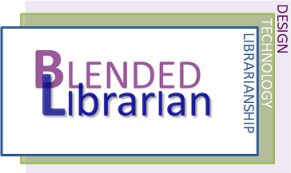One of the things you really enjoy doing as a Blended Librarian is introducing non-library instructors to the latest educational technology.
You know how this happens. Perhaps the instructor reached out to you for help with a research assignment, had a question about their own research or was just ranting about an education or research-related problem. It dawned on you that you are familiar with an instructional technology that might help this instructor save time, get students more connected with learning or offer a good opportunity for an instruction experiment.
Sounds like a great scenario for building a relationship with instructors that directly speaks to the WIIFM factor – What’s In It For Them! Saving them time. Helping them improve student engagement. Making better use of library resources. All good stuff.
But here’s the problem according to latest Campus Computing Project. There’s no great incentive for instructors to make the investment in learning and experimenting with new educational technology.In writing about this problem, Kenneth C. Green, director of the Project, states that “It is time to advocate for an expansive view of scholarship that values technology as part of the portfolio brought forward for review and promotion.”
Only 17% of all institutions have a formal program to recognize and reward faculty for the use of information technology as part of the routine review and promotion process.
When we ask instructors why they haven’t tried a new database or discovered that our new streaming media service has some great tools for integrating movie clips into their course site along with other learning resources, the answer is that there just isn’t enough time to get beyond Project JSTOR or whatever their go-to database is.
If our institutions paid heed to Green’s advice, I can imagine Blended Librarians having a much smoother path to collaboration with faculty to introduce library instructional technology into their courses. In fact, knowing that experimentation with or adoption of instructional technologies counted toward tenure and promotion, I could see faculty being more enthusiastic about taking time to learn and try new edtech tools.
Green acknowledges that there have been many calls from advocates over the years to open up the tenure and promotion process to include recognition for activities beyond the traditional ones that focus on research, teaching and service. Unfortunately, the gap between what higher ed has to say about wanting instructors to leverage instructional technology to advance student success and what it actually does to support faculty to do that exact thing is growing larger rather than diminishing.
